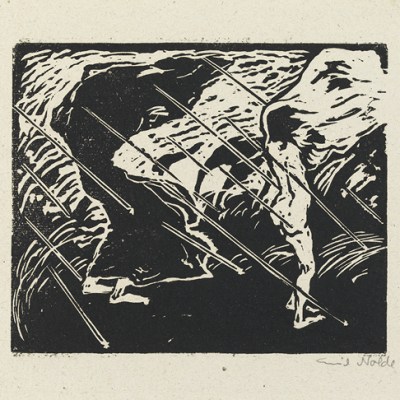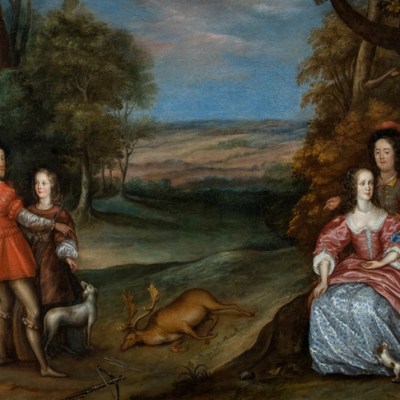The itinerary of Paris to Pont-Aven to St Ives was a familiar one for painters, ordinarily men, in the late 19th century. But Helene Schjerfbeck (1862–1946), who trod that path early in her career, was no ordinary painter. From the age of 11, when she won a scholarship to the Finnish Art Society’s drawing school in her hometown of Helsinki, she showed a steely determination to make her way as a woman artist in a man’s world. She proved it quickly, by tackling state-approved themes of national identity in history paintings such as The Wounded Warrior in the Snow (1880).
But it’s her preoccupation with more complex issues of personal and social identity that comes across from the Royal Academy’s survey, the first solo show of Schjerfbeck’s work since she showed in the late 1880s and 1890 with the Institute of Painters in Oil Colours on Piccadilly, while based in St Ives. Centring on a room of 17 self-portraits, the exhibition reveals to us an artist who, while keeping her independence from any modern art movements, was conceptually ahead of her time on the matter of subjectivity – closer to Cindy Sherman than Kathë Kollwitz.
Self-portrait with Red Spot (1944), Helene Schjerfbeck. Finnish National Gallery/Ateneum Art Museum. Photo: Hannu Aaltonen
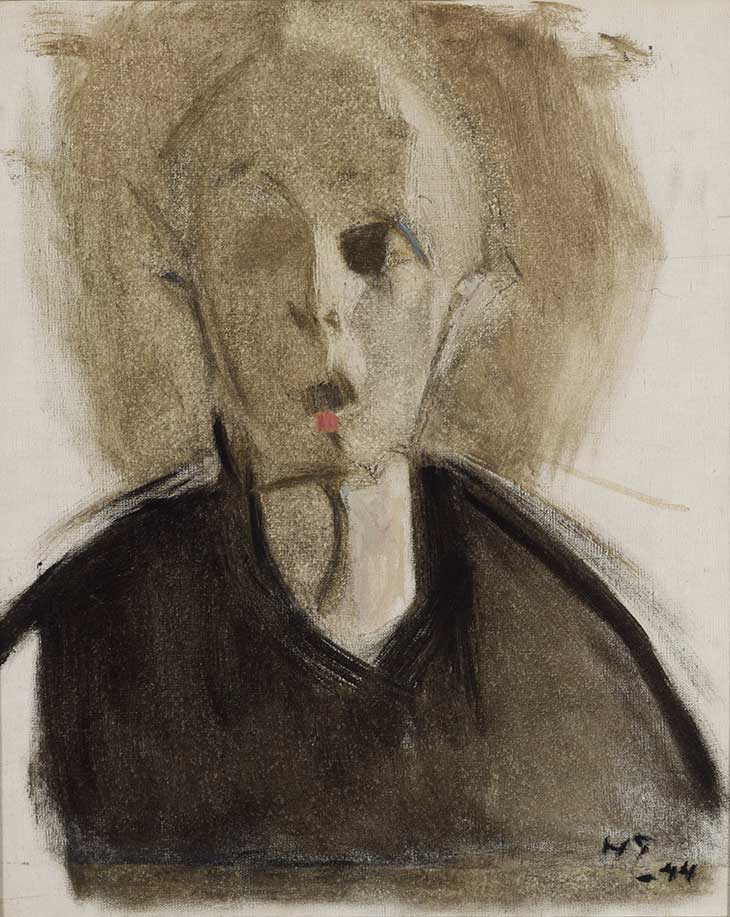
Schjerfbeck started out on her travels with youthful zest and a naturalistic style indebted to Jules Bastien-Lepage. View of St Ives (1887), with its two small boys in the foreground, is calculated to appeal to Victorian tastes, and The Convalescent (1888) verges on the sentimental. But already she shows a tendency to empty things out. Her painting of Clothes Drying (1883) in Pont-Aven omits the figures Berthe Morisot would have supplied, and her St Ives Bakery (1887), devoid of staff and customers, lacks human warmth.
View of St Ives (1887), Helene Schjerfbeck. photo: Finnish National Gallery/Hannu Aaltonen
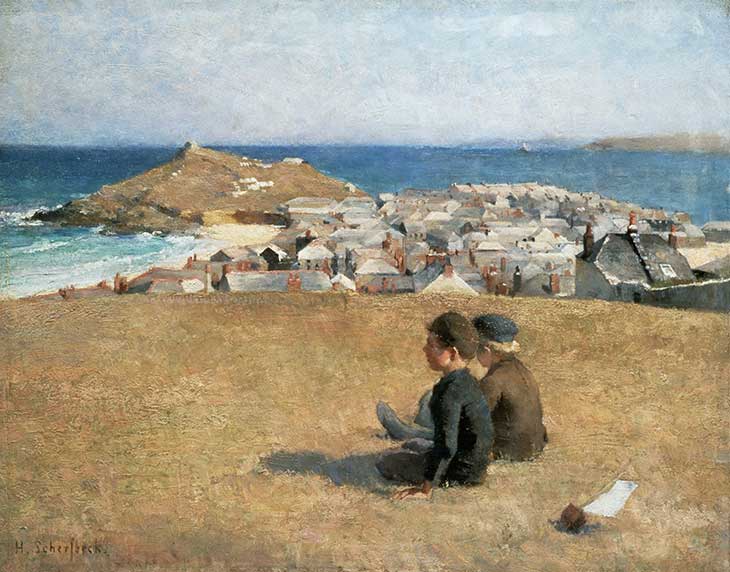
She had gone to St Ives in 1887 on the rebound from a broken engagement to join her friend from Paris and Pont-Aven, Marianne Stokes (née Preindlsberger). An earlier Self-portrait (1884–85) shows an expectant young woman, the shy look in her eyes belied by the determined set of her jaw. The Self-portrait (1895) painted 10 years later could be by a different painter of a different person, the expression blank and the paint as chalky as pastel. Despite travelling to St Petersburg, Vienna and Florence in the early 1890s to make copies of Old Master paintings for the Finnish Art Society, she felt her artistic and emotional horizons narrowing. Teaching in the Society’s drawing school left her little time to paint, and she was dogged by ill health. In 1902 she moved to a small town outside Helsinki to live with her mother off her widow’s pension. ‘Household and nursing on one side, painting on the other,’ was her life from now on.
Her subjects rarely engage with us directly. She had always favoured a profile format, but in her youthful Two Profiles (1881) there’s a sense of suspended animation; after 1902 all sense of movement is stilled and the silence deepened by an increasingly muted palette. Anonymous settings offer scant clues to their subjects’ identities: a chair, a table edge, a line of skirting, the minimum information to place them in space. Her poses recall Whistler and Hammershøi without the quietude; confusing titles increase the unease. Why is the subject of Head of a Girl Crocheting (1904) not actually shown crocheting but staring sullenly ahead? The stock-still Seamstress (1905) is only identified as such by the scissors hung on a ribbon that slices across her figure. Marianne Stokes had suggested that her friend ‘should expliquer more’, advice she rejected. She cast her nephew Måns as The Motorist (1933), though he didn’t drive, and her friend Einar Reuter as The Sailor (1918), though he was a forester.
Girl from Eydtkuhne II (1927), Helene Schjerfbeck. Finnish National Gallery/Ateneum Art Museum. Photo: Hannu Aaltonen
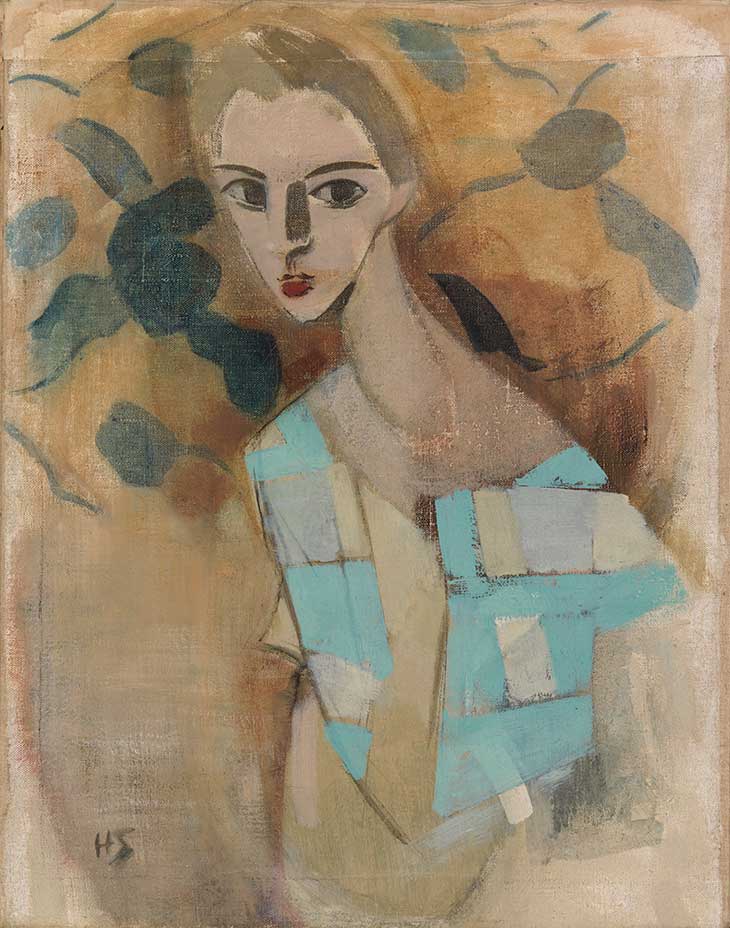
Both men are given dandified personae, while Schjerfbeck’s women become increasingly gamine. A keen follower of Paris fashion, she was fascinated by the androgynous ‘ligne’ promoted by Coco Chanel; her 1920s paintings of models in cloche hats, berets and bold geometric-patterned blouses have the stylised economy of fashion illustrations. She seems to have taken a perverse pleasure in transforming the local factory girls who posed for her into fashion plates and relished the transformative power of make-up, highlighting cherry-red lips on chalk-white faces and rouging cheeks.
Her self-portraits, meanwhile, grow increasingly mask-like, as if trying different characters on for size. The haughty Self-portrait, a Study (1915), against a silver-leaf backdrop, is a modern icon; Self-portrait, Black Background (1915) – a prestigious commission from the Finnish Art Society, and the only portrait in which she confronts us directly – is a poster announcing her artistic arrival, with her name stencilled in capitals across the top. Later, in the brutally simplified self-portraits of her last decade, she shrinks increasingly away from our gaze, looking askance out of the corner of startled, hunted eyes. The progressive pinching of the features, hollowing of the cheeks and dimming of the eyes seems more than the documentation of an ageing process; it suggests a descent into despair or madness. But is this just another sort of mask? We are left guessing.
Self-portrait, Black Background (1915), Helene Schjerfbeck. Finnish National Gallery/Ateneum Art Museum. Photo: Yehia Eweis
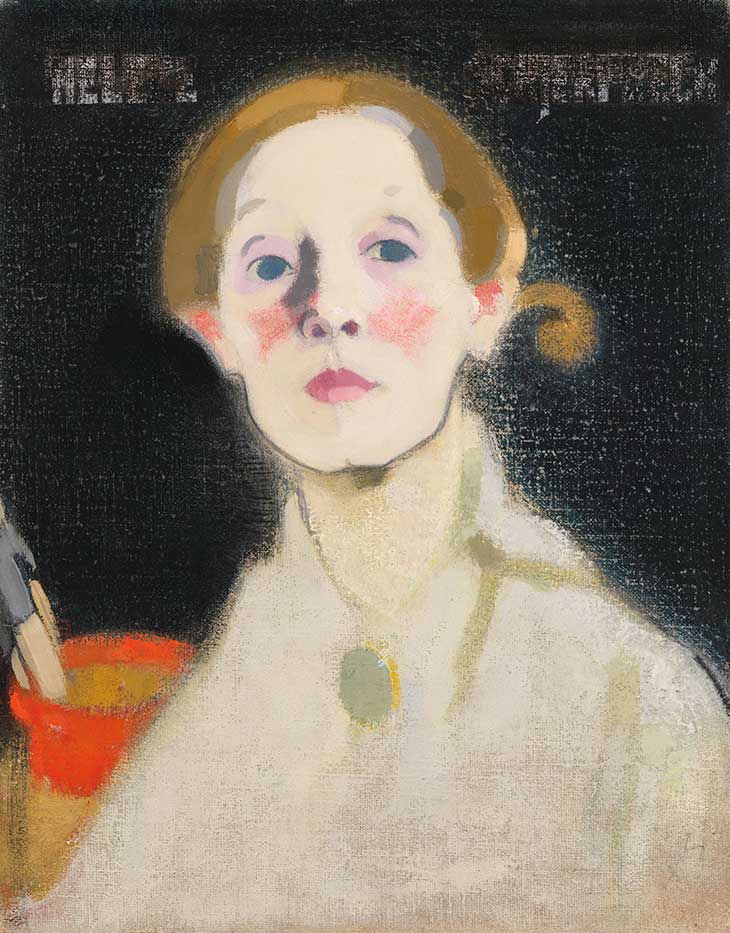
‘Helene Schjerfbeck’ is at the Royal Academy of Arts, London, until 27 October.


